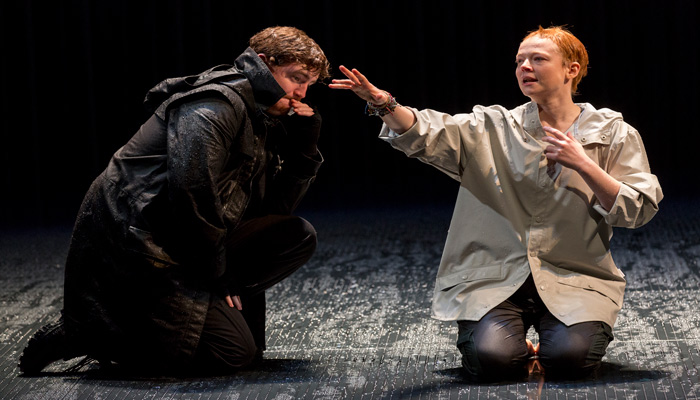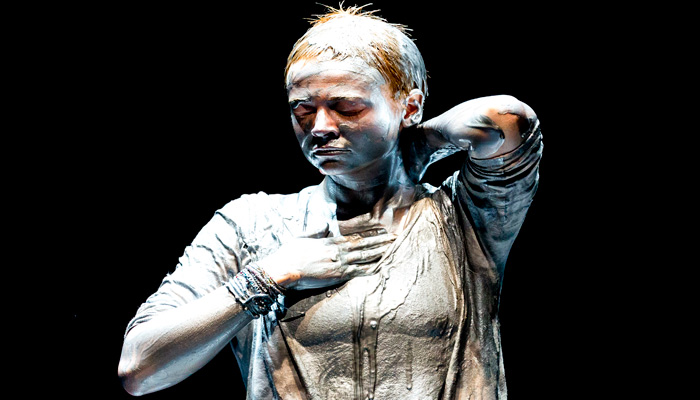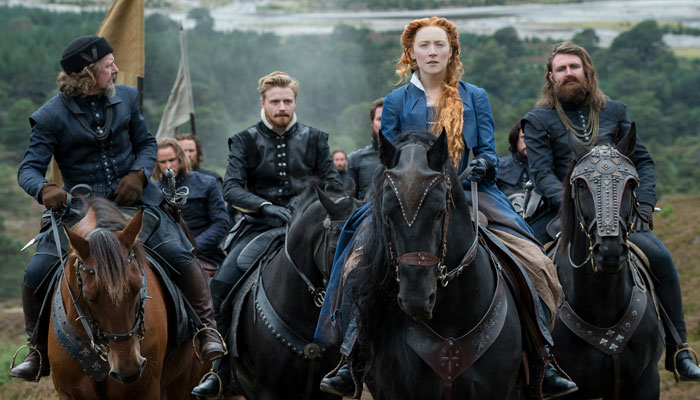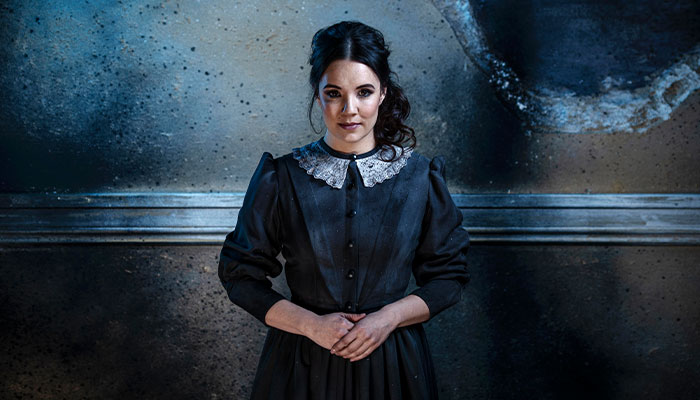"What are you going to be: an empty house, or a burning house?"
In the Sydney Theatre Company’s current production of George Bernard Shaw’s Saint Joan (1924), Joan of Arc is given a stark ultimatum by her ‘voices’ – the holy visitants she claims urged her mission to drive the English out of France.

The power of belief: Actress Sarah Snook in her role as Joan of Arc. Image: Brett Boardman
She can “burn” in defiant refusal of the occupying forces, or risk becoming an “empty house” through which the boots of ransacking soldiers stomp. The metaphor is not just one of political occupation, but of bodily violation, alluding to rape as a tactic of occupation and warfare.
The theme of female bodily autonomy runs strong through director Imara Savage’s punchy adaptation of Shaw’s longer, Nobel-snagging drama. Joan’s legendary adoption of male attire is the most obvious symbol of her self-determination; but it’s also vital that her chief ‘voices’ are Saints Margaret and Catherine, virgin martyrs who chose agonising deaths over sexual despoliation. Shaw’s Preface claims that Joan’s charisma transcended sex appeal, but the play itself suggests that her male appearance also warded off the threat of wartime rape.
Sarah Snook’s compelling performance as Joan channels the febrile energy of adolescence in the face of unjust authority. Her mouthy vulnerability calls to mind current young heroines such as U.S. anti-gun activist Emma Gonzales, but it also owes much to the real-life Joan encountered in the trial transcripts of 1431, whose voice still shocks with its bolshiness.
Adolescent energy vs male authority
Savage’s decision to commission new dialogue inspired by the transcripts gives Joan’s character a new urgency. This dialogue, by STC emerging writer Emme Hoy, delivers some of the play’s most memorable lines, including the empty / burning house ultimatum that shapes the course of Joan’s brief, burning future.
With Joan as the only female character in the play, soldiers and clerics crowd the stage – one or two at first, but as they play proceeds their numbers grow, until Joan is flanked on all sides by men. Bluff soldiers in black uniforms (especially striking is the imposing Anthony Taufa as Bluebeard) join ranks with black-cassocked clerics, forming a wall of male authority and brute power.
While Joan’s English captors are relentless in listing her crimes, it is John Gaden as the unctuous Inquisitor who is especially sinister: beneath his veneer of compassion for Joan lies a ruthless understanding of exactly how much – or rather how little – guilt is needed to consign her to the stake.

Battle dress: Sarah Snook slathers herself in silver paint in the final scenes of the play. Image: Brett Boardman
Savage and team keep the design austere and timeless: the darkened stage is almost completely bare, the only conspicuous prop being the stool on which Joan sits during interrogations. The costuming, too, is simple and stark, with the pale colours of Joan’s casual teen wardrobe standing out against the severe black costumes of the men, making her seem both vulnerable and luminous.
The lighting is mostly subtle blue or white washes with a restrained use of spotlighting. There are no intrusions of the drama’s fifteenth-century setting, save a body in armour that stands anonymously throughout the first scene – an image that’s stunningly reprised in the final scene when Joan, facing death, slathers herself in a coat of silver paint, as though arming herself for her ultimate battle.
A Joan for our time
At this moment the unobtrusive sound design suddenly rises in a cacophony of clanging metal and roaring voices. Throughout the climactic trial scene, in which Joan slumps, writhes, and kneels beseechingly under interrogation, her Inquisitors loom in a semi-circle behind her, declaiming their dialogue while looking straight ahead, like a chorus in a Greek tragedy. This decision honours Shaw’s insistence that Joan’s story is a tragedy, and links Joan to yet another, earlier tragic heroine: Sophocles’ Antigone, who defies the power of the Theban King and embraces martyrdom rather than betraying her conscience.
The play’s portrayal of martyrdom also resonates in a world grappling with how to understand religious extremism and its relationship to freedom fighting. Rather than simple disobedience, religious martyrdom is portrayed as a kind of radical obedience to one’s conscience and a higher moral authority. Joan, who Shaw called a “Protestant” because of her defiance of the Catholic Church’s supreme authority, believes herself answerable only to her ‘voices’ and their Divine mandates. T
The play does not query Joan’s sanity, but challenges us to takes seriously the implacable power of belief to direct (self-)destructive action but also to throw off injustice. The play is neither bleak nor straightforwardly celebratory of her martyrdom, but the thrilling spectacle of Joan covering herself with warpaint as she faces death openly invites our awe at the grandeur of her sacrifice.
And Shaw’s brief epilogue reminds us that Joan’s death was not the end. Not only was her beloved France freed, and she herself rehabilitated some twenty years later, but she went on to be venerated as the martial feminist figure we revere today.
From the first poem about Joan, Le Ditié de Jehanne d’Arc written by Christine de Pizan in 1429, to Marine le Pen’s racist recruitment of her as a symbol of Christian France, there seems to have been a Joan for every time. When Shaw wrote his play she was a newly canonised saint who also presaged the free-dressing, crop-haired flappers of the 1920s.
The STC’s revival of his Saint Joan gives us the Joan we need for our moment in history: gutsy, honest and confronting, but above all complex. As the fifteenth-century trial transcripts show, and this new production confirms, Joan is not a figure who answers questions without raising more questions. She is not an empty house, but a burning house.
St Joan is playing at the Roslyn Packer Theatre until June 30.



